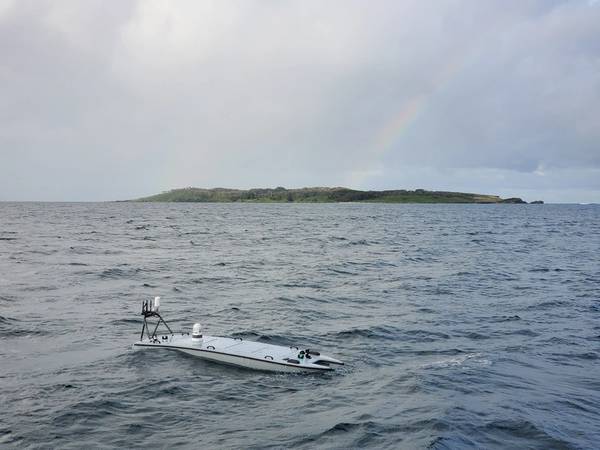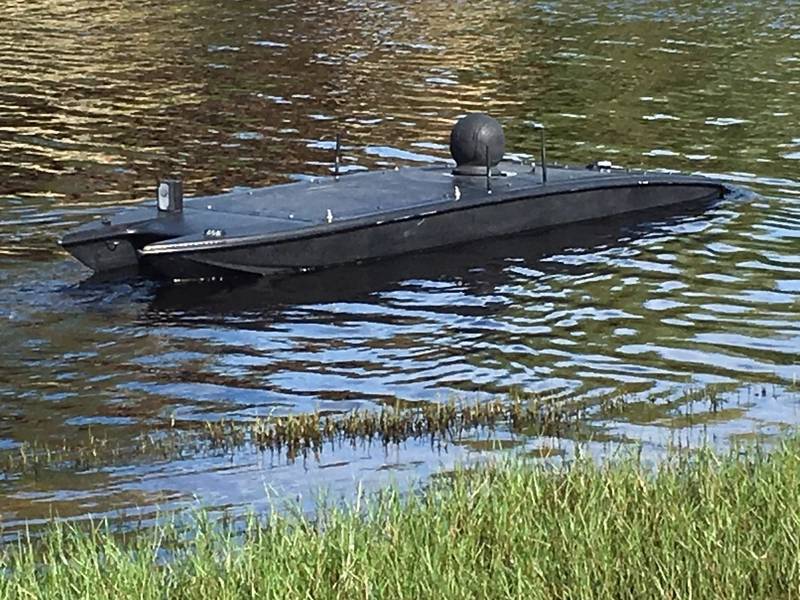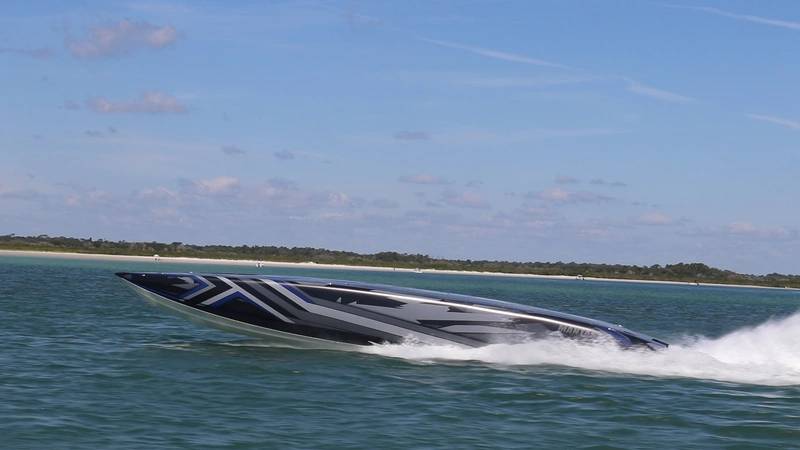
USVs can be a powerful force multiplier in keeping up with security operations in ports and harbors.
When most people think of globalization, they immediately think of the international trade that has lifted hundreds of millions out of poverty over the past few decades. As a former active-duty U.S. naval officer, that is where my focus has been for most of my professional life—on the high seas. That changed in August 2020 when deadly explosions rocked the harbor in Beirut, Lebanon. However, lost among the headlines that dominated the international news for weeks, was the importance of ports and harbors to the global commerce that is the lifeblood of the economy of virtually every nation.
The critical nodes that support trade are the world’s harbors. From Shanghai, to Rotterdam, to Los Angeles, to Hong Kong, to Shenzhen and to other mega-ports, as well as hundreds smaller ports, ports and harbors are critical to world prosperity. A catastrophic event could close one of these ports for an indefinite time and spill an enormous amount of pollution into the oceans.
Faced with this challenge, port authorities must ensure security twenty-four hours a day, every day. This task includes continuous inspection of port assets, threat detection and security response, ongoing surveys to ensure navigable waterways, hull inspections, and a wide-range of other missions.
The magnitude of providing comprehensive security for an average size port – let alone some of the world’s mega-ports – can sometimes lure port authorities into wishing away the challenge. But in an increasingly dangerous world, ports that can be attacked via land or sea present an inviting and vulnerable target.
 Shallow water ops. Photo by Jack Rowley
Shallow water ops. Photo by Jack Rowley
Today’s “State of the Art” for Port Security
Today’s port and harbor security measures in most ports involve monitoring the video provided by cameras throughout the port, as well as patrolling the ports’ expanse of water with a fleet of manned vessels. This methodology stresses the ability of port authorities to provide around-the-clock security.
Cameras seem to offer an effective solution, but several people must monitor the video for the cameras to have any effectiveness. With some ports maintaining scores of cameras, this entails having a command center and enough watch-standers to monitor all of the cameras twenty-four hours a day.
The use of manned craft to patrol a harbor of any size comes with its own issues. Manned vessel operations are expensive, are often limited by weather and water conditions, and physically stress port professionals. For most ports, multiple manned vessels are needed to guarantee sufficient revisit.
Given the manifest challenges of providing adequate – let alone comprehensive – security for ports with current state-of-the-art systems and capabilities, it is little wonder that port officials are searching for technology solutions that will enable them to provide better security, at lower costs.
Port of Los Angeles: A Mega-Port with a Mega-Challenge
The Port of Los Angeles (POLA) is the busiest port in the United States. This mega-port comprises 43 miles of waterfront, 42 square miles of water, 26 passenger and cargo terminals and 86 ship-to-shore container cranes. POLA handled over ten million twenty-foot equivalent units (TEUs) of cargo last year.
Current capabilities to secure the Port of Los Angeles involve monitoring the video provided by five hundred cameras throughout the port, as well as patrolling the ports’ expanse of water with a fleet of manned vessels. This methodology is increasingly expensive and does not provide comprehensive security. For these reasons, Port of Los Angeles officials had a mandate from a number of stakeholders to explore the possibility of using unmanned surface vehicles to enhance the security of the port.
To search for a solution, the port invited Maritime Tactical Systems Inc. (MARTAC) to visit and demonstrate the capabilities of their MANTAS unmanned surface vehicle. One of the primary reasons that the Port of Los Angeles requested the MANTAS system demonstration was the fact that MANTAS had performed well in a port security evaluation conducted by the U.S. Army. Three MANTAS T-series vessels were part of the Army’s Mobile Ocean Terminal Concept Demonstration in Concord, CA.
MANTAS is a high-performance USV built on a catamaran-style hull, and comes in a number of variants ranging in size from six-foot to 50-foot. The POLA demonstration was conducted with a 12-foot MANTAS (T12). MANTAS can be equipped with a wide variety of above-surface sensors and below-surface, as well as other devices such as chem/bio/nuclear sensors, water quality monitors, and above/below surface environmental sensors.
MARTAC representatives provided a comprehensive briefing on MANTAS capabilities, examined the span of POLA authorities’ operations, and provided a remote demonstration where POLA officials controlled MANTAS operating off the eastern coast of Florida. The demonstration provided POLA stakeholders with an understanding of how a USV could enhance port security.
POLA officials and the U.S. Coast Guard asked MARTAC Inc. to consider providing larger USVs for the port and harbor security role, since a larger unmanned maritime vessel could carry more sensors and stay underway for a longer period. MARTAC engineers did just that, and a 38-foot, T38 Devil Ray, was built and was demonstrated during a number of U.S. Navy exercises, as well as during a port and harbor security demonstration for the Port of Tampa. Photo by Jack Rowley
Photo by Jack Rowley
Enhancing the Effectiveness of Port and Harbor Security
The enhanced port and harbor security methodology described in this article has not been evaluated previously, and there is a reason. The technology to provide reliable, adaptable and affordable USV support to augment manned capabilities and expand the reach of port security officials at facilities such as the Port of Los Angeles and Port of Tampa simply did not exist just a few years ago. But that has now changed.
This technology is available today with commercial off-the-shelf unmanned surface vessels, and these can be employed to increase the effectiveness of port protection. Given the enormous personnel costs associated with monitoring cameras and patrolling with manned vehicles, this innovative solution designed to supplement current capabilities will drive down life cycle costs.
This POLA demonstration and subsequent Port of Tampa validation certified that commercial-off-the-shelf unmanned surface vehicles can ably conduct a comprehensive security inspection of a mega-port. As the world continues to come to grips with the human and economic impact of the Beirut harbor disaster, all nations would be well-served to leverage emerging technology to enhance the security of the ports and harbors that make the global economy hum.
 About the Author: George Galdorisi is Director of Strategic Assessments for the Naval Information Warfare Center Pacific. He enjoys writing, especially speculative fiction about the future of warfare. He is the author of fifteen books, including four New York Times bestsellers. Photo courtesy George Galdorisi
About the Author: George Galdorisi is Director of Strategic Assessments for the Naval Information Warfare Center Pacific. He enjoys writing, especially speculative fiction about the future of warfare. He is the author of fifteen books, including four New York Times bestsellers. Photo courtesy George Galdorisi



